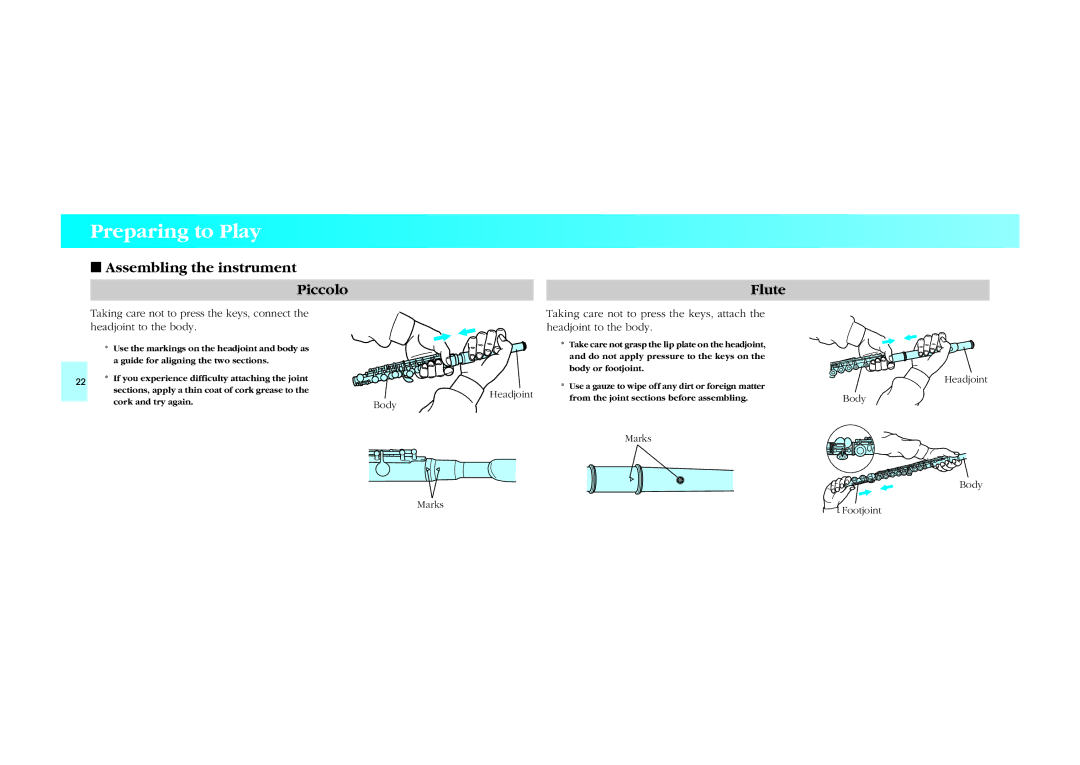Piccolo/Flute specifications
The Yamaha Piccolo, a smaller sibling of the flute, is a highly regarded instrument that combines craftsmanship, innovation, and performance. Designed for musicians of all skill levels, this instrument is particularly known for its bright, resonant sound and is widely used in orchestras, band ensembles, and solo performances.One of the main features of the Yamaha Piccolo is its construction. Typically made from select grenadilla wood or synthetic materials such as ABS resin, the choice of material significantly impacts the tonal quality. Grenadilla wood is favored for its rich, warm sound while synthetic materials offer durability and resistance to environmental factors. Additionally, Yamaha's meticulous precision in manufacturing ensures that each piccolo is crafted to exacting standards, providing musicians with an instrument that is reliable and true to tune.
In terms of technology, Yamaha incorporates advanced designs such as the YPC-62R model which features a headjoint design that enhances the instrument's responsiveness and projection. The pointed key mechanism allows for fluid and smooth action while playing, making it easier for musicians to execute intricate passages. This design not only contributes to playability but also enhances the overall tone quality, allowing for a more expressive performance.
Another notable characteristic of the Yamaha Piccolo is its range. Typically, piccolos have a range of about three octaves, and Yamaha's instruments are designed to facilitate ease of play across this range. The lower notes are warm and full, while the higher notes are bright and piercing, perfectly complementing orchestral and band settings. The intonation is superior, allowing players to easily blend with other instruments, which is crucial in ensemble performances.
Yamaha understands the needs of contemporary musicians, offering various models tailored to different playing styles and preferences. For instance, some models come equipped with a split E mechanism which aids in easier play of the challenging E note.
In summary, the Yamaha Piccolo stands out for its excellent craftsmanship, innovative design, and versatility. Whether for a beginner or a seasoned professional, the Yamaha Piccolo delivers a rich, vibrant sound that enhances any musical repertoire. With its stable intonation, responsive key action, and beautiful tonal quality, the Yamaha Piccolo is a favorite among woodwind players, making it an invaluable addition to any musician's collection.

